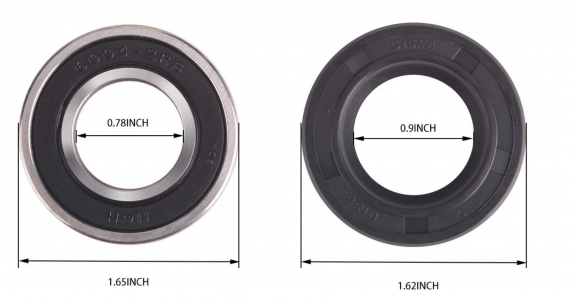Thanks guys for the advice. I did weld up the badly worn areas where the bearing and the seal wear on the axle. I went with my TIG welder, since it was already set up and easy to do. I am not the best TIG guy on the planet, but the best in my one man shop. Haha. So I probably got the shaft hotter than I should have, but I did get it built up and let it cool down. Then turned the weld down to a close enough guessing point on the final OD. I ordered and today received the replacement bearings and seals. My plan was to pull the other side axle and use the dimensions from that side as a guide. But that side is also worn. Probably not bad enough to start welding on, but not good enough to use as a guide for my final OD on the one that I am working on.
I figure that the bearing fitment should be a press fit, I'm thinking .001 over the ID of the bearing. Is that correct? But not sure how to figure the OD of the axle for the seal fit.
The seal originally was a CR 539033. Way obsolete and I am unable to find any specs on it. The replacement is a China cheapo that I haven't even tried to look up. Is there a "typical" or rule of thumb for the shaft size for a seal fit?


